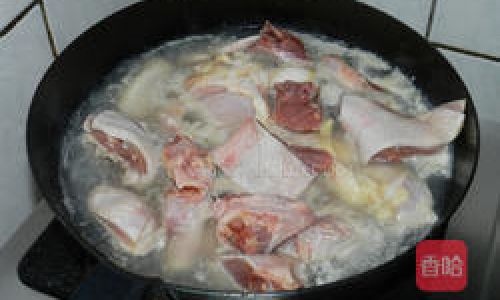Introduction
Abalone chicken noodle soup, a luxurious and comforting dish rooted in Asian culinary traditions, has captivated food enthusiasts worldwide with its delicate balance of flavors and textures. This exquisite meal combines the briny richness of abalone, the wholesome depth of chicken broth, and the satisfying chew of perfectly cooked noodles. Often reserved for special occasions or celebrations, this soup transcends mere sustenance, offering a taste of cultural heritage and refinement. Whether you are a seasoned home cook or a curious novice, this comprehensive guide will walk you through the intricacies of crafting this iconic dish, ensuring a result that is both authentic and unforgettable.
The Allure of Abalone Chicken Noodle Soup
Abalone, a prized shellfish revered for its tender meat and oceanic sweetness, forms the soul of this dish. Paired with chicken, which imparts a golden, collagen-rich broth, the combination creates a symphony of umami that is both grounding and elegant. The addition of noodles—whether silken egg noodles or springy wheat variants—adds a comforting familiarity, making this soup a harmonious blend of gourmet and homestyle cooking.

Ingredients: Assembling the Building Blocks of Flavor
To embark on this culinary journey, gather the following ingredients, each chosen for its role in elevating the dish:
For the Broth:
- 1 whole chicken (3–4 lbs), preferably free-range or organic
- 8 cups cold water (or low-sodium chicken stock for enhanced depth)
- 4 slices fresh ginger (1/4-inch thick)
- 4 garlic cloves, smashed
- 1 medium onion, quartered
- 1 carrot, roughly chopped
- 2 celery stalks, roughly chopped
- 1 tablespoon black peppercorns
- 1 tablespoon kosher salt
- 2 bay leaves
- 1 star anise (optional, for subtle warmth)
For the Abalone:
- 6 fresh abalone (or 1 cup canned abalone, drained and sliced)
- 1 tablespoon neutral cooking oil (e.g., grapeseed or vegetable)
- 1 teaspoon Shaoxing wine (or dry sherry)
- 1/2 teaspoon white pepper
For the Noodles and Garnish:
- 12 oz fresh egg noodles (or dried wheat noodles, cooked according to package instructions)
- 4 baby bok choy, halved
- 4 fresh shiitake mushrooms, stems removed
- 2 scallions, thinly sliced (green parts only)
- 1 red chili, thinly sliced (optional)
- 1 teaspoon sesame oil
- 1 lime, cut into wedges
Equipment Checklist:
- Large stockpot (8-quart capacity)
- Fine-mesh sieve
- Chef’s knife and cutting board
- Tongs and slotted spoon
- Mortar and pestle (or spice grinder)
The Broth: Laying the Foundation
The broth is the heartbeat of this dish, requiring patience and attention to detail. Begin by rinsing the chicken under cold water, removing any giblets or excess fat. Place it breast-side up in the stockpot and cover with cold water. Add the ginger, garlic, onion, carrot, celery, peppercorns, salt, bay leaves, and star anise (if using).
Bring the mixture to a gentle simmer over medium heat, skimming off any impurities that rise to the surface. This scum, if left unattended, can cloud the broth and impart bitterness. Once the liquid reaches a bare simmer, reduce the heat to low, cover partially, and let it mellow for 2–3 hours. The goal is to coax out the chicken’s collagen, resulting in a silken, golden broth.
Pro Tip: For an even richer flavor, roast the chicken bones at 400°F (200°C) for 30 minutes before adding them to the pot. This caramelization adds depth and complexity.

Preparing the Abalone: A Delicate Dance
Fresh abalone, with its iridescent shell and firm flesh, demands meticulous preparation. If using live abalone, remove the meat by inserting a spoon between the shell and the flesh, gently prying it loose. Scrub the meat under cold water to remove any debris, then slice it into thin, bias-cut strips.
Heat the cooking oil in a skillet over medium-high heat. Sear the abalone slices for 30 seconds per side until they develop a slight caramelization. Deglaze the pan with Shaoxing wine, tossing the abalone to coat. Remove from heat and season lightly with white pepper.
Note: Canned abalone, while convenient, lacks the texture of fresh. If using, pat it dry and sear briefly to enhance its flavor.
Assembling the Soup: Bringing It All Together
After simmering, carefully remove the chicken from the broth and set it aside to cool. Strain the broth through a fine-mesh sieve, discarding the solids. Return the broth to the pot and bring it back to a simmer.
Shred the chicken meat, discarding the skin and bones. Add the shredded chicken, seared abalone, baby bok choy, and shiitake mushrooms to the broth. Simmer gently for 5–7 minutes, allowing the vegetables to soften without losing their vibrancy.
Cooking the Noodles: Perfecting the Texture
While the soup simmers, cook the noodles in a separate pot of boiling water. Fresh egg noodles require 2–3 minutes, while dried noodles may take 5–7 minutes. Drain and rinse under cold water to prevent sticking, then toss with sesame oil to coat.
Serving: The Final Flourish
Divide the noodles among four bowls. Ladle the hot broth, abalone, chicken, and vegetables over the noodles, ensuring each bowl receives an equitable share. Garnish with scallions, chili slices (if desired), and a squeeze of lime. Serve immediately, accompanied by a side of soy sauce or chili oil for those who crave extra heat.
Variations and Customizations

- Vegetarian Twist: Substitute the chicken broth with a mushroom-based dashi, and use king oyster mushrooms in place of abalone.
- Spicy Abalone Noodle Soup: Add a tablespoon of gochujang or Sichuan peppercorns to the broth for a fiery kick.
- Seafood Extravaganza: Enhance the dish with shrimp, scallops, or clams for a surf-and-turf feast.
Troubleshooting Common Pitfalls
- Cloudy Broth: Ensure the broth simmers gently; vigorous boiling will emulsify fats and proteins, resulting in a murky appearance.
- Tough Abalone: Overcooking is the enemy. Sear abalone briefly to retain its tender texture.
- Bland Flavor: Roast the chicken bones beforehand or add a splash of fish sauce for umami depth.
The Cultural Tapestry of Abalone Chicken Noodle Soup
In many Asian cultures, abalone symbolizes prosperity and is served during Lunar New Year celebrations. Its inclusion in this soup elevates the dish to a festive status, embodying hopes for abundance and good fortune. The act of sharing this soup with loved ones reinforces bonds, making it a cherished centerpiece at family gatherings.
Nutritional Benefits: A Bowl of Wellness
Abalone is a low-fat, high-protein seafood rich in iodine, iron, and omega-3 fatty acids, which support thyroid function and cardiovascular health. Chicken broth, often dubbed “Jewish penicillin,” contains gelatin and collagen, aiding digestion and joint mobility. Paired with vegetables, this soup offers a balanced dose of vitamins and fiber, making it a nourishing choice for cold seasons.
Storing and Reheating Leftovers
To store, transfer the soup to airtight containers, excluding the noodles (which can become soggy). Refrigerate for up to 3 days or freeze for 3 months. Reheat gently over low heat, adding fresh noodles and garnishes before serving.
Conclusion: A Culinary Legacy Reimagined
Abalone chicken noodle soup is more than a meal—it is a testament to the art of balance, patience, and respect for ingredients. Whether you seek to honor tradition or innovate, this recipe invites you to explore the nuances of flavor and texture. So, gather your ingredients, set aside an afternoon, and embark on a journey that promises to delight the senses and nourish the soul. After all, the greatest dishes are those made with intention, love, and a dash of culinary curiosity.





0 comments